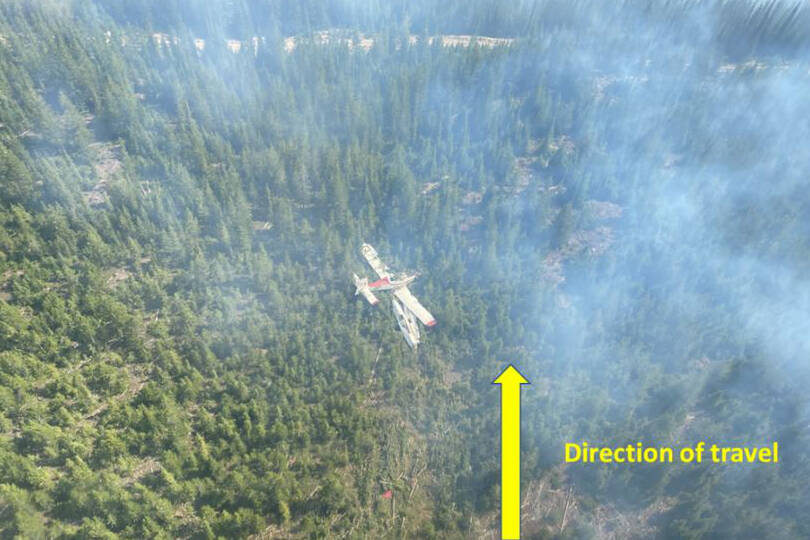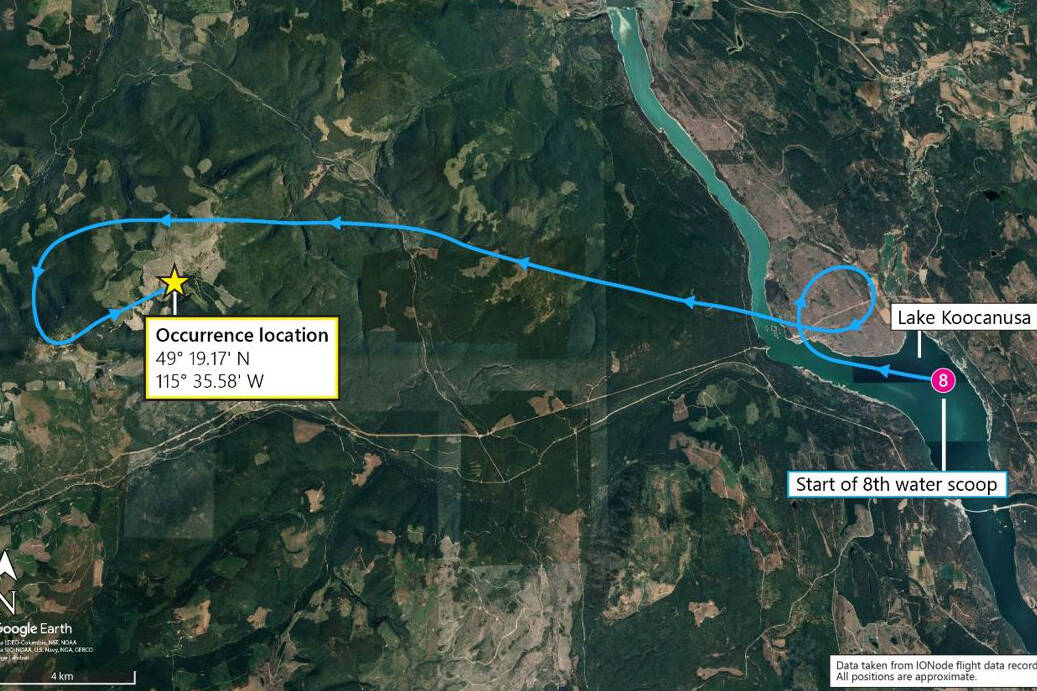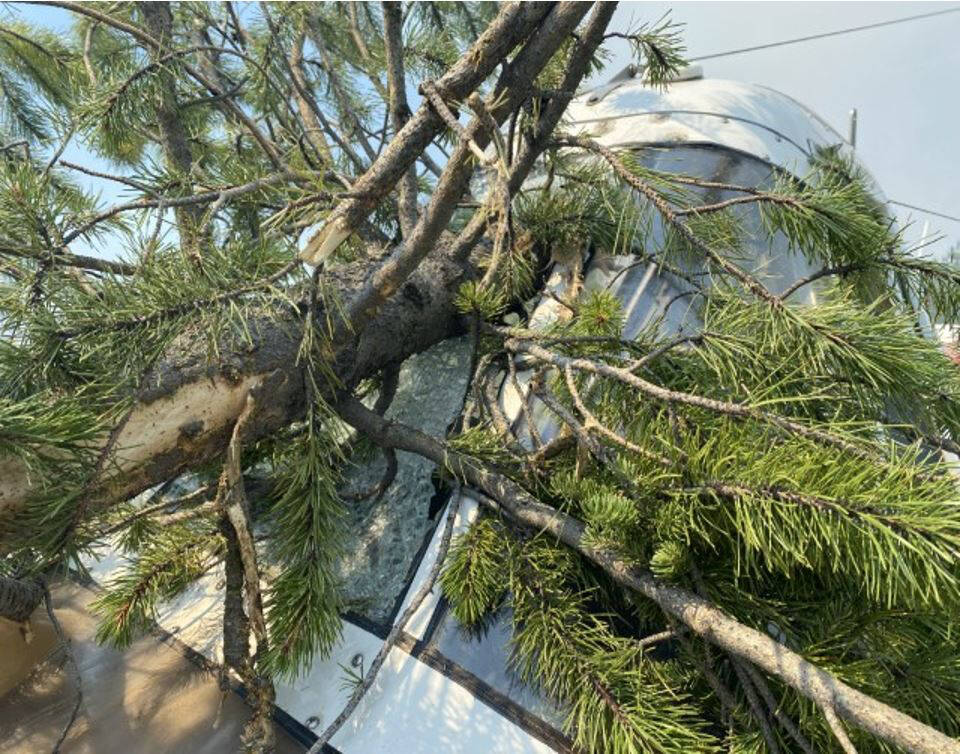A skimmer aircraft had to make a forced landing after losing engine power for undetermined reasons while fighting a wildfire south of Cranbrook in 2022.
The Transportation Safety Board of Canada released the findings of their investigation on Wed, May 1, nearly two years after the incident.
The aircraft, a single-seat AT-802A operated by Conair Group Ltd., was guided down by the pilot into a reforested area after experiencing a loss of power while climbing out of a water drop on the Connell Ridge wildfire on Aug. 2, 2022.
At 7:37 p.m., the aircraft made its eighth drop of the day after loading up water tanks from Lake Koocanusa a few kilometres east of the wildfire.
While climbing out of the drop, the aircraft lost engine power at 350 feet above the ground. The pilot unsuccessfully tried a few different options to troubleshoot the issue. Unable to restore power, he selected a reforested area and guided the aircraft down into an emergency landing 200 metres from the wildfire perimeter.
During the descent at 68 knots (125 km/h), the engine flamed out, and a small tree penetrated and shattered the windscreen, grazing the pilot’s helmet.
It was 40 seconds between the loss of engine power to ground contact from the forced landing.
The pilot was able to radio another skimmer aircraft, which coordinated with another bird dog aircraft for a helicopter pickup at a nearby logging road.
Weather conditions and pilot error or fatigue were not considered factors in the incident.
The pilot’s experience and decision-making, use of a helmet and five-point safety harness, the aircraft windscreen and slow impact speed all contributed to a successful outcome, according to the investigative report.
Because of the low altitude of engine failure, the pilot did not have enough time to complete a checklist and determine the cause before having to make the forced landing.
As a result of the incident, Conair took action to ensure that all AT-802 pilots receive low-altitude engine failure training in a simulator. Conair also created a new alarm system for the AT-802 to recognize power fluctuations, and implemented a fleetwide check on emergency locator transmitters.
The Connell Ridge wildfire was brought under control in late August 2022, after growing to 1,700 hectares in a remote area south of Cranbrook.
READ ALSO: Pressure to complete flight after failed attempt factor in B.C. crash: TSB



